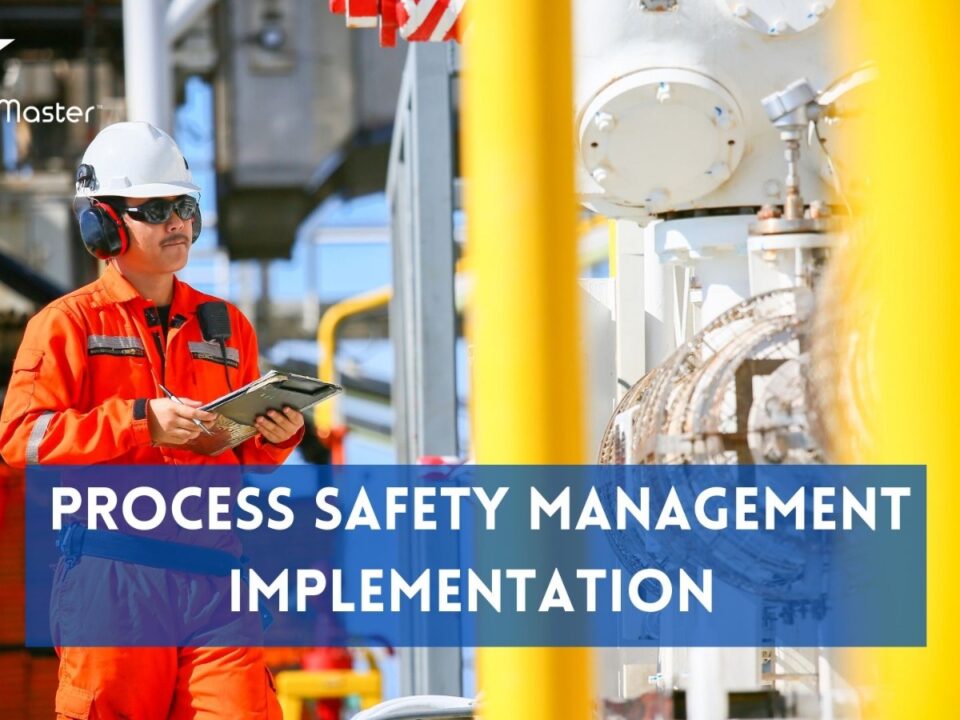Leveraging Technology for Enhanced Job Safety Analysis & Common Mistakes to Avoid in Job Safety Analysis

EHS Audit & Report: The Importance of Regular Audits for a Safe and Compliant Workplace
February 17, 2025
Beyond Compliance: Why Manufacturing Industries Should Embrace Behaviour-Based Safety Implementation Programs
February 20, 2025In today’s rapidly evolving industrial landscape, ensuring job safety has become more critical than ever. Companies are increasingly turning to technology to enhance their Job Safety Analysis (JSA) processes, aiming to create safer work environments and minimize the risk of accidents. However, while technology can significantly improve JSA, it is also essential to be aware of common mistakes that can undermine its effectiveness. This article explores how technology can be leveraged for enhanced JSA and highlights common pitfalls to avoid.
The Role of Technology in Job Safety Analysis
Technology has revolutionized many aspects of industrial safety, and JSA is no exception. By integrating advanced tools and software, companies can streamline their safety procedures, ensure compliance, and foster a culture of continuous improvement.
- Data Collection and Analysis: Advanced software tools can collect and analyze vast amounts of data related to workplace hazards, incidents, and near-misses. This data-driven approach allows safety managers to identify trends and patterns, which can inform more effective safety measures. For example, wearable technology equipped with sensors can monitor workers’ vital signs and environmental conditions in real time, alerting them to potential hazards before they become critical.
- Automation and Standardization: Automation plays a crucial role in enhancing JSA by standardizing procedures and reducing human error. Automated systems can ensure that safety checklists are consistently followed, inspections are completed on time, and reports are accurately generated. This consistency is vital for maintaining high safety standards across different sites and teams.
- Virtual Reality (VR) and Augmented Reality (AR): VR and AR technologies offer immersive training experiences that can significantly improve workers’ understanding of safety protocols. By simulating real-life scenarios, these technologies allow employees to practice their responses to various hazards in a controlled environment. This hands-on approach can lead to better retention of safety procedures and quicker response times in actual emergencies.
- Mobile Applications: Mobile apps provide a convenient way for workers to access JSA information, report hazards, and receive updates in real-time. These apps can also facilitate communication between team members and safety managers, ensuring that critical information is shared promptly. Moreover, mobile apps can integrate with other systems, such as incident reporting and management platforms, to create a seamless safety ecosystem.
- Cloud-Based Solutions: Cloud technology enables the centralization of safety data, making it accessible from anywhere at any time. This accessibility is particularly beneficial for multinational companies with operations in different locations. Cloud-based solutions also support collaboration among safety teams, as they can easily share information and insights, leading to more informed decision-making.
Common Mistakes to Avoid in Job Safety Analysis
While technology offers numerous benefits for enhancing JSA, it is crucial to avoid common mistakes that can hinder its effectiveness. Here are some pitfalls to watch out for:
- Inadequate Training: Implementing advanced technology without providing adequate training to employees can lead to misuse and underutilization. Workers must be thoroughly trained on how to use new tools and understand the importance of adhering to updated safety procedures. Continuous training programs should be in place to keep employees up-to-date with the latest advancements.
- Overreliance on Technology: While technology can enhance safety, it should not replace human judgment and experience. Overreliance on automated systems can create a false sense of security and lead to complacency. It is essential to maintain a balance between technology and human oversight, ensuring that workers remain vigilant and proactive in identifying and addressing hazards.
- Poor Integration: Introducing new technology without proper integration with existing systems can create confusion and inefficiencies. It is vital to ensure that all safety tools and platforms are compatible and work seamlessly together. This integration will facilitate better data flow and improve the overall effectiveness of the JSA process.
- Neglecting Employee Feedback: Employees on the front lines often have valuable insights into potential hazards and the practicality of safety measures. Failing to incorporate their feedback into the JSA process can result in ineffective safety protocols. Regularly seeking input from workers and involving them in safety discussions can lead to more comprehensive and practical safety solutions.
- Ignoring Regular Updates and Maintenance: Technology and safety protocols are continuously evolving. Neglecting to update software, tools, and safety procedures can leave the company vulnerable to new hazards and regulatory changes. Regular updates and maintenance are essential to ensure that safety measures remain effective and compliant with the latest standards.
Integrating Technology with Traditional Safety Measures
While technology can significantly enhance JSA, it is most effective when integrated with traditional safety measures. A holistic approach that combines technology with proven safety practices can create a robust safety culture within the organization.
- Collaboration with Process Safety Consultants: Engaging process safety consultants can provide valuable insights into integrating technology with existing safety measures. These experts can help identify potential gaps in the safety process and recommend appropriate technological solutions. Their expertise can also ensure that the company complies with industry regulations and standards.
- Comprehensive Safety Programs: Incorporating technology into comprehensive safety programs, such as process safety management training, can enhance the overall effectiveness of safety initiatives. These programs should cover all aspects of job safety, from hazard identification and risk assessment to emergency response and incident investigation.
- Regular Safety Audits: Conducting regular safety audits, including fire audit, can help identify potential hazards and assess the effectiveness of safety measures. Technology can streamline the audit process by providing real-time data and analytics, making it easier to identify areas for improvement and implement corrective actions.
- Continuous Improvement: A commitment to continuous improvement is essential for maintaining a high level of safety. Technology can support this by providing tools for monitoring safety performance, tracking progress, and identifying areas for enhancement. By fostering a culture of continuous improvement, companies can ensure that their safety measures remain effective and relevant.
Conclusion
Leveraging technology for enhanced Job Safety Analysis offers numerous benefits, from improved data collection and analysis to immersive training experiences and real-time communication. However, it is essential to avoid common mistakes such as inadequate training, overreliance on technology, poor integration, neglecting employee feedback, and ignoring regular updates. By integrating technology with traditional safety measures and involving process safety consultants, companies can create a comprehensive and effective safety program. This approach ensures a safer work environment, reduces the risk of accidents, and promotes a culture of continuous improvement.




